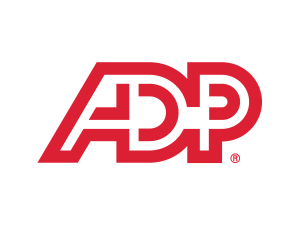The Global Standards Mapping Initiative will catalog outputs from more than 30 technical standards-setting entities, 185 jurisdictions, and almost 400 industry groups.

Image: Getty Images/iStockphoto
An initiative has been started to gain a better understanding of the blockchain standards landscape globally. Led by the Global Blockchain Business Council and the World Economic Forum, the Global Standards Mapping Initiative is a joint effort seeking to map and assess the current blockchain and digital asset landscape in three distinct areas: Legislation and guidance released by sovereign or international bodies, industry best practices and standards, as well as technical standards.
“While the blockchain technology and digital assets industry has grown tremendously, a lack of clarity around standards, policies, and frameworks threatens to slow progress,” said Sofia Arend, senior analyst with the Global Blockchain Business Council, in an interview.
“In light of this, industry leaders came together to launch the GSMI and lay the foundation toward greater harmonization and clarity surrounding standard-setting. The GSMI is a living initiative that will continue to evolve and be built upon as we work to develop global standards, policies, and frameworks.”
SEE: Special report: How blockchain will disrupt business (free PDF) (TechRepublic)
Arend called it “the first comprehensive effort to survey blockchain standards” and said it included global entities like Accenture, the Digital Currency Initiative, MIT Media Lab, ESG Intelligence, Global Digital Finance, Hyperledger, The Linux Foundation, ING, the Milken Institute and others.
In total, the GSMI catalogs outputs from more than 30 technical standards-setting entities, 185 jurisdictions, and almost 400 industry groups to assess the current landscape and evaluate where there may be gaps, overlaps, inconsistencies and conflicts.
The group released a report that synthesizes many of the key trends and provides action-oriented guidance for public- and private-sector actors. The GSMI findings are organized into two reports: One focused on legislation and guidance, and one focused on technical standards, as well as an interactive world map of blockchain and digital asset guidance and regulation across 185 jurisdictions.
Arend said the GSMI reports and resources are accessible to the public and are intended to serve as a resource for the blockchain community as the community looks to develop thoughtful frameworks and standards to propel the industry forward.
Sandra Ro, CEO of the Global Blockchain Business Council, said that GSMI partners and collaborators are a diverse group of stakeholders across industries, governments, and academia who represent a range of perspectives and ideologies.
“Their coming together to lay the foundation toward greater harmonization and clarity surrounding standard-setting exemplifies the unique ethos of the blockchain community rooted in collective progress and collaboration,” Ro said. “The GBBC is proud to have incubated this initiative alongside the World Economic Forum and looks forward to continued collaboration as the GSMI evolves and develops beyond this initial release. We invite new partners to join us as we build upon this initial body of work, GSMI version 1.0.”
The report highlighted that there is fragmentation within the blockchain community around the world that has led to “overlaps, gaps, and conflicts in standard-setting” as well as a “lack of dynamic guidance for new uses of the technology, the need for proactive strategies from organizations, and the important role regulators will play in shaping the future of the technology.”
Arend explained that the group is hoping to catalogue and analyze the current bedrock of standards and guidance in the blockchain and digital asset ecosystem, with the end goal being to encourage increased collaboration and harmonization in standard-setting and policy-making.
The group also wants to draw attention to key areas that require attention and Arend noted that unlike emerging technologies that have come before, blockchain technology is a “team sport,” that will require multi-stakeholder collaboration to be successful.
“Moreover, collaboration must be truly global as the technology does not abide by traditional, sovereign borders,” she added.
The report, she said, lays out the current state of blockchain, digital assets, across technical, legal, regulatory, and industry consortia. The group is in the planning stages for the next reports which will potentially include taxonomy harmonization, a comprehensive catalogue of crypto and token foundations as well as more detailed work around industry-specific standards and taxonomy related to blockchain use cases and applications for supply chains, insurance, taxation, and etc.
Since the release of the first report, a number of different organizations have contacted GSMI to help collaborate on shaping the direction of the next version.
Since the GSMI version 1.0, many different organizations have reached out to help collaborate on shaping the direction of version 2.0.
“Their coming together to lay the foundation towards greater harmonization and clarity surrounding standard-setting signals a big leap forward as we look to spur the next wave of innovation to create more prosperous, equitable, and secure societies,” Arend told TechRepublic.
Sheila Warren, head of blockchain, digital assets, and Data Policy at the World Economic Forum, touted the effort in a statement, saying there has been a strong demand signal for a catalogue of standards-related activity that could serve as a cornerstone for facilitating responsible deployment and interoperability.
Executive director of Hyperledger Brian Behlendorf said the GSMI reports will be key resources for adding critical structure to the fast-evolving blockchain industry.
“The broad-based effort behind this important mapping project shows the inherently collaborative nature of the blockchain ecosystem,” he said.
Also see
Source of Article




